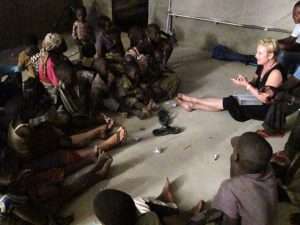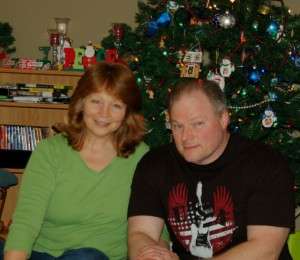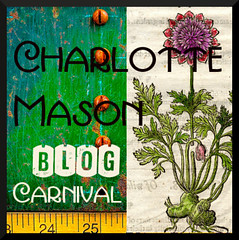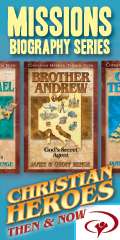This is an email that I get from Keren Hannah Pryor at jcstudies.com. She puts really neat graphics in the emails that she sends out, so if you want to see them, subscribe to her email weekly devotional study, and you will get the full effect. Details are at the bottom of this teaching.
SIMCHAT TORAH – JOY OF TORAH
A New Beginning
The conclusion of the annual Torah reading cycle at this time and the immediate beginning of the cycle for the next year is the central reason and focus of the holiday of Simchat Torah. An old gate is closing and a new one is opening. We celebrate the new beginning and the opportunity to step forward into another year of relationship with our Father, the Giver and Source of Life, and into continuing growth in knowledge of His Word and thereby of Himself. We can lift our hearts and rejoice and sing with the Psalmist:
“Open my eyes, that I may behold wondrous things in Your Torah.
Your testimonies are my delight, they are my counselors. …Give me understanding, that I may keep Your Torah and observe it with my whole heart. Lead me in the path of Your commandments, for I delight in it.
The sum of Your Word is truth; and every one of Your righteous ordinances endures for ever… my heart stands in awe of Your words. I rejoice at Your Word, like one who finds great treasure”
(Psalm 119:18, 24, 34-35,160-162).
Be glad and rejoice in Simchat Torah and give honor to the Torah…
for she is our strength and our light (Simchat Torah song).
The central means of celebration on Simchat Torah is singing and dancing! Simchat Torah calls us to rejoice before God with all our hearts and might… to celebrate the Word of God as King David did when he returned the Ark of the Covenant to Jerusalem (1 Chronicles 15:28-29). What would we do without the light and wisdom of God’s Word? Simchat Torah gives us an opportunity to rejoice over the wonder, the depths and the power of His Word with childlike abandon; to drop our self-conscious defenses and throw ourselves joyfully into rejoicing greatly before our Father in Heaven! To “dance as David danced” is a challenge to adults, but now a wonderful occasion is given for children and adults to sing and dance in joy together at the great gift God has given of His Torah, His precious and eternal Word, and the incarnation of this Word in the life of His Son and our Messiah – Yeshua. How can we not find reason to rejoice greatly?
In synagogues, the dancing takes the form of seven hakafot, or circles, which reinforces the concept of the cycles of life. This also highlights the relationship of God and His people as that of a Bride and Groom, one of Covenant love, and recalls how at Mount Sinai the Torah can be seen as the ketubah, the wedding document of the bridegroom and the bride. In some traditional Jewish wedding ceremonies the bride circles the groom seven times, signaling the constant daily presence of the Shekhinah of God that surrounds us in steadfast love. Joyful dancing is also the means of celebration at a wedding, the elation of which is expressed in the final of the Sheva Brachot, the Seven Blessings that are prayed over the bride and groom. This crowning blessing also encapsulates the heart of Simchat Torah, and the heart of our relationship with the Beloved of our souls:
Blessed are You, O Lord our God, King of the Universe, who created joy and happiness, bride and groom, gladness, jubilation, cheer, and delight, love, friendship, harmony, and fellowship.
O Lord our God, let there speedily be heard in the cities of Judah and in the streets of Jerusalem the sound of joy and the sound of happiness, the sound of the Bridegroom and the sound of the Bride…
Blessed are You Lord, who gladdens the Groom with the Bride.
Hakafot at the Kotel – Western Wall
At the synagogue evening service all the Torah scrolls are removed from the Ark [special cupboard that houses the Torah scrolls], to be passed lovingly from person to person during the seven hakafot. Sometimes a lit candle, or a Bible, is placed in the now empty Ark to show that the light of Torah never goes out.
After the dancing, the last portion of the Torah is read, VeZot HaBeracha – And This is the Blessing (Deut. 33:1-34:12); the only time of the year that the Torah is publicly read at night. Then the scroll is rolled back to the beginning and a part of the first portion of Genesis, B’reishit – In the Beginning, is read. The cycle of the Word continues without interruption, in harmony and joyful gratitude.
Oh How I love Your Torah!
During the morning service on the following day, celebrations are a little more subdued and the deeper values of God and His Word are reflected upon. In accord with the understanding that the Torah is “a tree of life to those who grasp it,” the opportunity on Simchat Torah to literally hold it close to oneself is meaningful. To touch and hold a person one loves is a great blessing, so too one finds blessing in touching and holding the Torah scroll, which is resplendent in a finely embroidered robe, is crowned with a beautiful crown and adorned with a decorative breastplate. As we grasp the Torah scroll it is an expression of our deep longing to embrace the Beloved of our souls, the Word made flesh, the King of kings!
An IDF soldier holds a Torah scroll
After further hakafot, quieter singing and dancing with the scrolls, to enable every person to hold and kiss a scroll, all but three of the Torah scrolls are returned to the Ark. Readings are done from the three scrolls and certain people are honored in making aliyah to the Torah, being called up to read. Recognizing the connection with marriage, the first person called is named “groom of the Torah” (chatan Torah), who reads the last verses of Deuteronomy. The second is the “Genesis groom” (chatan B’reishit), who has the honor of reading the first chapter of Genesis. The third and last one is called “the groom for the reading of the prophets” (chatan maftir), who reads about the succession of leadership from Moses to Joshua.
A special aliyah is made for the last blessing of the Torah readings, when all the children are called up to the bima, the central platform from which the Torah scroll is read. A large tallit (prayer shawl) is spread over them and the rabbi blesses them and the congregation recites Genesis 48:16,
“The angel who has redeemed me from all evil, bless the youths; and let my name [Jacob] be named upon them and the name of my fathers Abraham and Isaac; and let them grow into a multitude in the midst of the earth.”
The children are the next generation and this is a powerful gesture of the desire to fulfill the biblical injunction: “And these words which I command you this day shall be upon your heart; and you shall teach them diligently to your children…” (Deuteronomy 6:6-7).
The Feasts of the Future
It is of interest to note that, in Temple times, identical sacrifices were offered at the altar on both Rosh HaShanah and Shemini Atzeret (the Eighth Day, together with Simchat Torah, which in Israel, as well as in the Reform tradition of Judaism, are celebrated on the same day). This was not merely coincidence as the Temple sacrifices were a significant component of worship of God and they were meticulously planned and executed in order to express the meaning and essence of each festival. The matching sacrifices thus tied Rosh HaShanah to Simchat Torah, embracing the Fall Feasts as one unit. This fact reinforces the understanding that this group of feasts is the “crown” and culmination of the Festival Cycle and represents the aim and fulfillment of all the holy days of the year. Whereas the previous Feasts are rooted in history, and relate to an historic event already experienced by God’s people, the Fall Feasts celebrate prophetic events that await fulfillment in the future.
At present, on Rosh HaShanah and Yom Kippur we recognize with gratitude our present relationship to God as our Father and King of the universe, and we can come before Him in repentance, clothed in the righteousness of Yeshua our Messiah, and accept His loving forgiveness. Also, on Sukkot we rejoice in the knowledge that we are covered by the Hand of God and can rest in His protection and provision on our tenuous journey through life. On Shemini Atzeret and Simchat Torah, we joyfully thank God for His Word and anticipate eternity in His Presence. The true and full promises of these Festivals, however, are yet to be experienced. On that Great Day known only to the Father, the final ‘new beginning’ of Rosh HaShanah, the last great trump will sound – the Tekiah Gedolah of the great Shofar – announcing the arrival of Mashiach ben David, the Lion of the tribe of Judah, Messiah the Son of David. The dead will be raised; and all mankind will stand before the King who sits on the Throne of Judgment. On the final Yom Kippur, the judgment on all nations and people will be sealed and delivered. Those who are to enter the great sukkah – the banqueting hall of the Wedding Feast of the King and His Bride – will assemble and great will be the rejoicing. Shemini Atzeret, the Eighth Day, will begin – the Day that is all Shabbat – the time of true peace, a time of eternal, unbreakable unity and blessing, harmony and joy. The King will be reigning in Jerusalem and the Kingdom of God will be established in all the earth. HalleluYah!
Until that time, we wait in hope and faith and continue on the next cycle of our journey through life. Let us join hands, united in the true and faithful Word and promises of our Father in Heaven, in the fellowship we have in Messiah, and in the love and power of the Holy Spirit. Let us step confidently into the winter season ahead, anticipating the beautiful, dancing lights of Hanukkah that shine the light of God’s Presence into the darkness of the world – just as we are called to do.
With the flame of God’s love bright in our hearts, let us shine for Him!
Chazak! Chazak! ve’Nitchazek!
Be strong! Be strong! And may we strengthen one another!
Baruch HaShem! Praise His Name! We are reaching the end of another year of study of the precious Word of our God and of His pleasant paths.
A NEW BOOK
Keren’s devotional studies on the weekly portion, A Dash of Drash, are now available in well-formatted book form – hot off the press in time for the new Torah study cycle that begins the first Shabbat of October, (2nd Oct., 2010). An excellent way to review and dig deeper into the text during the year ahead!
You can order your copy now through our secured website JC Studies
You can also take advantage of our special offer to obtain a set of both commentaries, A Taste of Torah and A Dash of Drash, at a special launch price. Good to keep in mind for your gift-giving!
Thank you for walking with us this past year, may our faithful Lord continue to guide and bless our steps on the path ahead – for His glory!
Keren Hannah and the JC Studies team
You have subscribed to Keren Hannah Pryor’s weekly devotional study through the five books of Moses, in order to better understand how knowing the Bible in its original context helps us live more intentionally in God’s Presence today. Visit us at www.jcstudies.com.
Our contact information:
The Center for Judaic-Christian Studies
P.O. Box 750815
Dayton, OH 45475
1 (937) 434.4550
If you desire to contribute financially, thank you.
Copyright (C) 2010 Keren Hannah Pryor & The Center for Judaic-Christian Studies. All rights reserved.












 "Oh that God would give every mother a vision of the glory and splendor of the work that is given to her when a babe is placed in her bosom to be nursed and trained! Could she have but one glimpse in to the future of that life as it reaches on into eternity; could she look into its soul to see its possibilities; could she be made to understand her own personal responsibility for the training of this child, for the development of its life, and for its destiny,--she would see that in all God's world there is no other work so noble and so worthy of her best powers, and she would commit to no other's hands the sacred and holy trust given to her." -JR Miller
"Oh that God would give every mother a vision of the glory and splendor of the work that is given to her when a babe is placed in her bosom to be nursed and trained! Could she have but one glimpse in to the future of that life as it reaches on into eternity; could she look into its soul to see its possibilities; could she be made to understand her own personal responsibility for the training of this child, for the development of its life, and for its destiny,--she would see that in all God's world there is no other work so noble and so worthy of her best powers, and she would commit to no other's hands the sacred and holy trust given to her." -JR Miller






